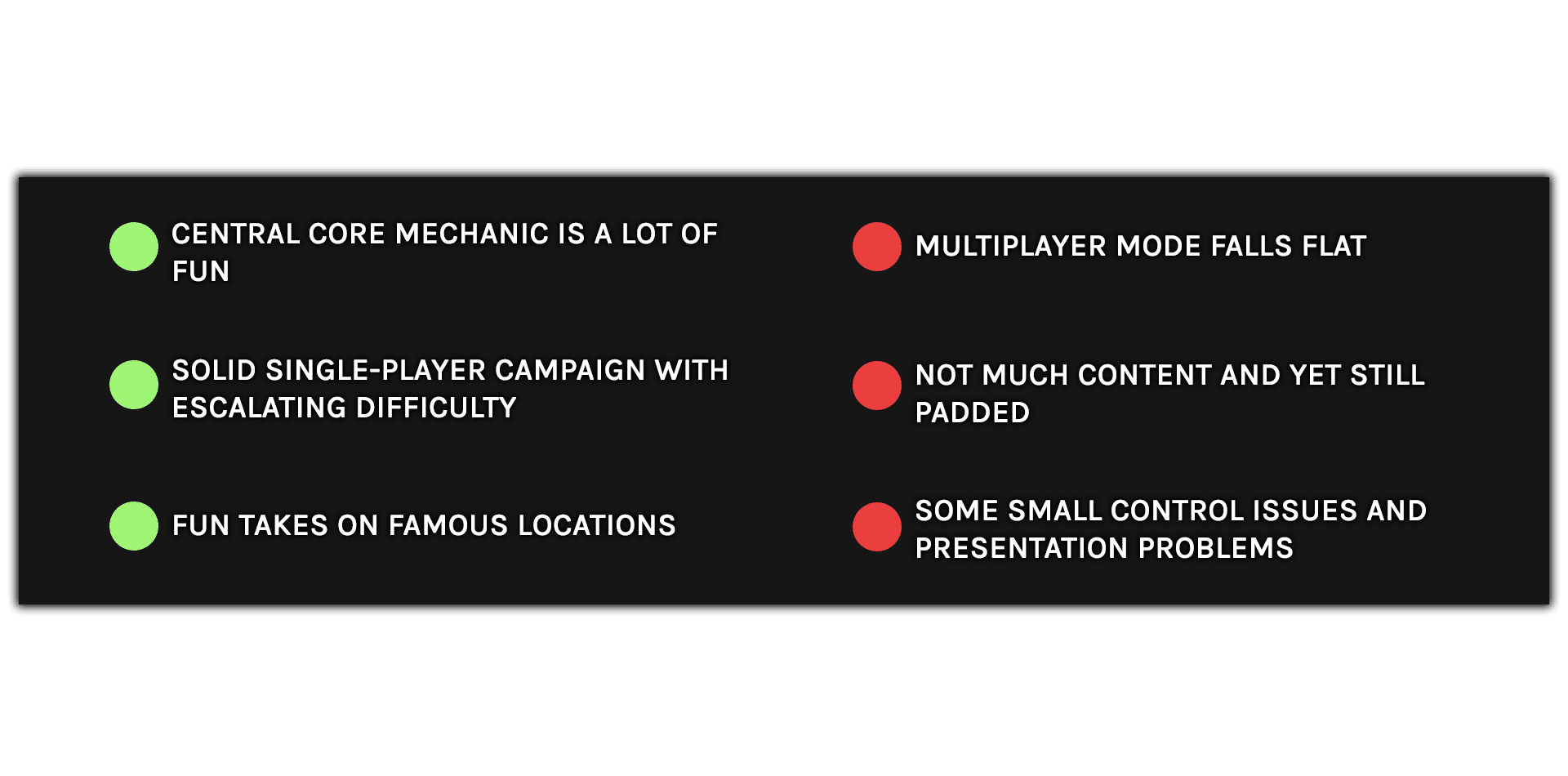Traffic Jams’ excellent central mechanic fleshes out into a mostly entertaining single-player, but its multiplayer falls flat. More in our Traffic Jams review!
Note: This review was originally published on April 8th 2021, we’re republishing it today as Traffic Jams comes to PSVR.
Finally, an Overcooked-style VR game that isn’t just, y’know, Overcooked. Not that there haven’t been some fun clones in this ‘keep the plates spinning’ genre over the past few years, but surely we can get some more original ideas for VR?
Traffic Jams is exactly that – keep the flow of cars and crossing pedestrians going and try to avoid tragedy while signalling them with easy ‘Stop’ and ‘Go’ gestures. It’s an absolutely brilliant idea, intuitive to VR and instantly graspable. And, for the most part, developer Little Chicken does a good job structuring the game around it.
At least it does in single-player. Traffic Jams’ campaign follows the expected path of increasingly finnicky levels; things start out with a very manageable set of crossings and directions but, as you visit different parts of the world, levels start to twist and turn into more enjoyably fiendish designs. A riff on Tokyo’s Shibuya crossing has people marathoning over crossings while angry drivers wait impatiently, while New York’s Times Square presents a maze of sharp turns and conflicting paths.
[vc_row][vc_column][vc_cta h2=””]Traffic Jams Review – The Facts
What is it?: A plate-spinning game of directing the flow of traffic, using intuitive gestures to avoid collisions
Platforms: Quest, PC VR, PSVR
Release Date: Out Now
Price: $19.99[/vc_cta][/vc_column][/vc_row][vc_row][vc_column][vc_column_text]
Victory depends on you keeping calm in a game designed to do anything but. Traffic Jams does have genuine depth; zippy motorbikes move faster than buses, so you need to account for vehicle speed when making decisions. At the same time, asking people to wait for too long will send them off in a strop, risking unwanted collisions. Once you come to understand and work with the rules the game is a fantastically frantic affair, constantly keeping you on your toes as you mentally juggle who is going where.
Inevitably, you’re going to trip up. This being in VR, I felt a genuine stab of panic when I realized someone was going to be hit by a car, though the cartoonish visuals and its own sense of ridiculous humor help cushion the blow. Traffic Jams presents likable spins on each of its environments, though it’s also true that the Quest version is on the rough-side visually, especially when it comes to character models.
Though the handful of locations — five in total — is meagre, the game remixes each twice over with harder night-time and rush hour variants that not only speed up the flow of traffic but introduce more slapstick elements. Zombies lurk at night and you can time cars to swerve into them, a clever way to reward the satisfying destruction you’d otherwise want to avoid. Some levels also have specific hazards, like a kaiju foot landing in the middle of the Tokyo level.
Most of the bells and whistles are here, then, and I had a great time with Traffic Jams’ core components. The signalling doesn’t work perfectly, however; you just need to hold out one hand and point at the desired person to signal to people, and wandering hands make for unexpected mishaps. I found myself accidentally asking people to stop and go fairly often, which led to unwanted restarts when going for perfect records.
The game is also determined to pad out its base content which, while admirable, introduces some annoying elements. To unlock new levels you need to get stamps in your current missions – three per mode. But getting three stamps isn’t just about racking up high scores – you also have to complete side objectives. Some of these are fun, like finding the game’s flamboyant mascot, Dennis, hiding behind scenery. Others, like popping balloons with frisbees against the clock, are just frustrating distractions that lead you away from the real fun.
The objective list stacks so you’ll end up playing through levels a few times for the score and then a few times specifically to tick off these demands, and the latter attempts just feel like they’re holding things up.
But the game’s biggest failing is with its multiplayer which, instead of trying to create some competitive fun, opts for awkward cooperative support that falls flat. Up to four players can join on smartphone and work with the VR player to meet specific objectives. Complete objectives quickly and you’ll add more time to the clock, with the goal being to survive as long as possible. Smartphone players can summon traffic and activate powerups while goals sometimes ask you to both cause crashes and save people at the same time.
There was potential here to brew some hilarious rivalries, with smartphone players catching the VR user out in unexpected ways. Instead you’re just asking smartphone users to summon elements and then trying to either time crashes or play the game as normal. It’s a confused offering that stretches out for too long in even just a single game, and it doesn’t contribute to campaign progress, either.
Traffic Jams Review – Final Impressions
Traffic Jams’ brilliantly intuitive central mechanic makes for a good time in single-player, even if there isn’t much content to it. It’s a uniquely frantic thrill to juggle the crowds and the controls — whilst not always precise — make great use of VR. But I suspect the game’s real charm would have been in a riotous multiplayer experience, and that’s something Traffic Jams simply doesn’t have. Not one for family game night, then, but taken on its own merits Traffic Jams is far from a car crash.
For more on how we arrived at this score, read our review guidelines. What did you make of our Traffic Jams review? Let us know in the comments below!





























